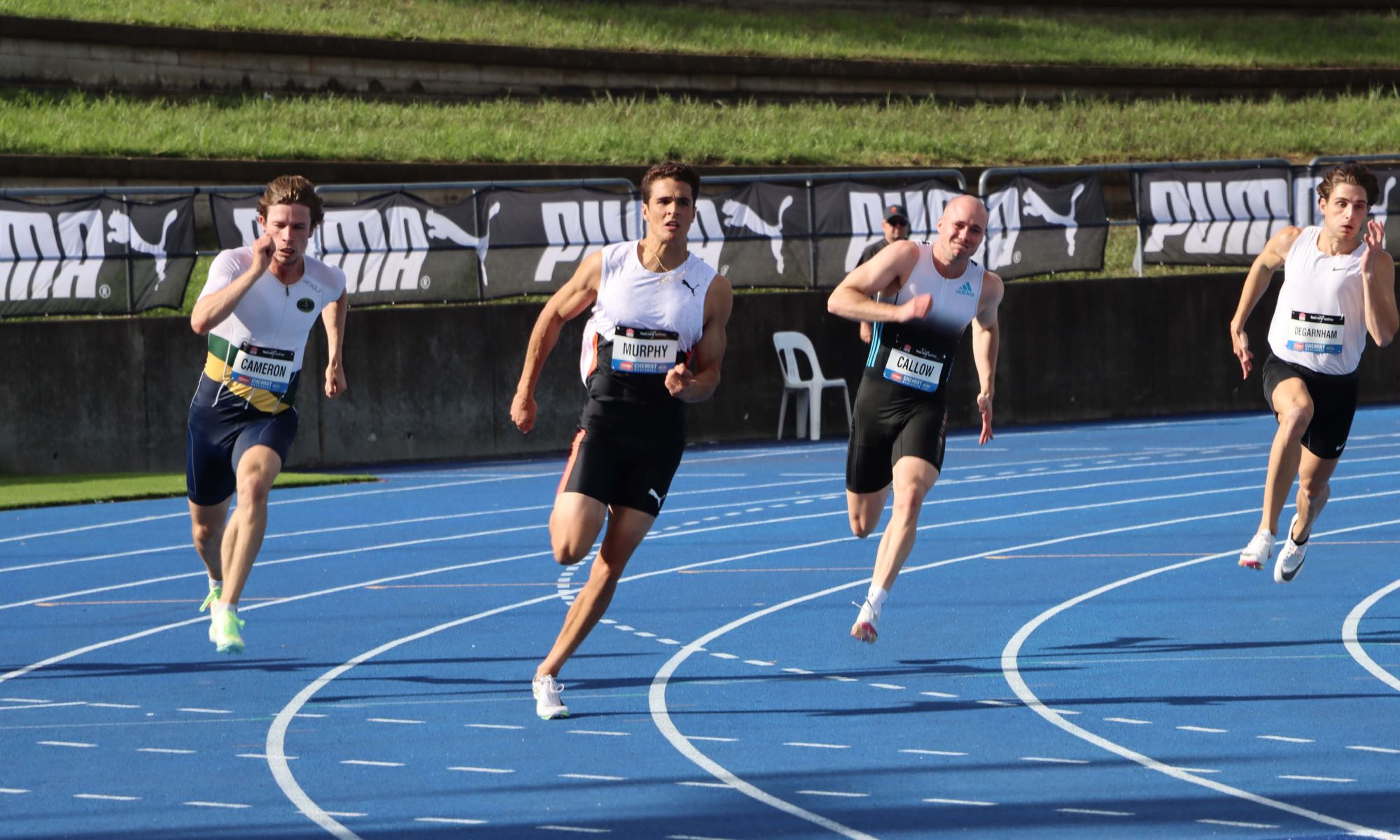Home>Misc>Featured>What Does Wind Factor Mean In Track And Field


Featured
What Does Wind Factor Mean In Track And Field
Published: September 4, 2023
Discover the meaning of wind factor in track and field and its impact on performance. Learn how featured athletes adapt to varying wind conditions for optimal results.
Introduction
When it comes to competitive sports, precision and fair play are of utmost importance. In the world of track and field, athletes strive to achieve their best performance while adhering to strict regulations that ensure a level playing field. One factor that can greatly influence the outcome of a race is the wind factor.
Wind factor, also known as wind assistance, refers to the effect of wind on an athlete’s performance in track and field events. It can either enhance or hinder an athlete’s performance, depending on the direction and strength of the wind. Understanding how wind factor works is crucial for both athletes and officials in ensuring fair competition and accurate results.
In this article, we will delve deeper into the concept of wind factor in track and field. We will explore its significance, how it is calculated, and the impact it can have on an athlete’s performance. Additionally, we will discuss the rules and regulations surrounding wind assistance and provide strategies for athletes to handle different wind conditions effectively.
By the end of this article, you will have a comprehensive understanding of wind factor in track and field, and how it can affect competition outcomes. So, let’s dive in and uncover the secrets behind this intriguing element in the world of athletics.
Understanding Wind Factor
In track and field, wind factor refers to the influence of wind on an athlete’s performance during certain events, such as sprints and jumps. The wind can either provide a tailwind, assisting the athlete, or a headwind, creating resistance and making it more challenging to achieve optimal results.
Wind factor is measured in meters per second (m/s) and is categorized as either positive or negative, depending on the direction. A positive wind factor indicates a tailwind, meaning the wind is blowing in the same direction as the athlete, providing a potential boost. Conversely, a negative wind factor indicates a headwind, where the wind is blowing against the direction of the athlete, potentially slowing them down.
It’s important to note that wind factor only comes into play when it exceeds a certain threshold. In sprints, for example, the wind speed must be between +2.0m/s and -2.0m/s to be considered valid. If the wind exceeds this threshold, the performance may be considered wind-aided or wind-affected, depending on whether the wind was favorable or unfavorable.
Calculating wind factor involves a combination of measured wind speed and the specific event in which it is being measured. To determine the wind factor, a handheld anemometer or an electronic wind gauge is used to measure the wind speed during the event. This measurement is then adjusted based on the event to provide an accurate indication of how the wind impacted the athlete’s performance.
It’s worth noting that wind factor can have a significant impact on the outcome of a race or jump. A strong tailwind can result in faster sprint times or longer jumps, whereas a strong headwind can slow down athletes and lead to shorter jumps. As a result, wind factor plays a crucial role in evaluating and comparing performances in track and field events.
Now that we have a clear understanding of wind factor, let’s explore its significance in track and field and how it can affect an athlete’s performance.
Significance of Wind Factor in Track and Field
The wind factor in track and field events holds significant importance as it can greatly influence an athlete’s performance and the overall outcome of a race or jump. Understanding and accounting for wind factor is essential for accurate evaluation and comparison of athletic performances.
For sprinters, the impact of wind factor can be substantial. A tailwind can provide the extra push needed to achieve faster times, potentially resulting in personal bests or even world records. Conversely, a headwind can pose a challenge, requiring athletes to exert more effort to maintain their speed and potentially leading to slower times.
In long jump and triple jump events, wind factor plays a crucial role in determining the validity of the jump and measuring the distance achieved. A tailwind can propel the athlete further, resulting in longer jumps, while a headwind can impede their momentum and shorten the distance. Accurate assessment of wind factor ensures fair comparison of performances among athletes and maintains the integrity of the sport.
The significance of wind factor extends beyond individual performances. It can impact the overall results and rankings in athletic competitions. Tailwinds or headwinds can create advantages or disadvantages for certain athletes, potentially shifting the outcome of a race or affecting the final standings. Therefore, correctly assessing and accounting for wind factor is crucial in determining the fairness of competition and awarding accolades.
Wind factor also adds an extra layer of excitement and unpredictability to track and field events. Athletes must not only focus on their physical abilities and technique but also remain prepared to adapt to varying wind conditions. In this way, wind factor adds an element of challenge that athletes must navigate, further highlighting their skills, adaptability, and mental fortitude.
Given the significance of wind factor in track and field, officials and event organizers employ strict regulations to ensure fair competition and accurate measurements. Calculating wind factor and clearly indicating wind-aided or wind-affected performances are essential steps in maintaining integrity within the sport.
Now that we understand the significance of wind factor in track and field, let’s delve into the methods used to calculate wind factor accurately.
Calculating Wind Factor
Accurately calculating wind factor in track and field involves a combination of measured wind speed and the specific event in which it is being measured. The process aims to provide a fair assessment of how much the wind helped or hindered an athlete during their performance.
During events, anemometers or electronic wind gauges are used to measure the wind speed at the moment of an athlete’s performance. These devices are strategically positioned to capture the most accurate data based on the direction of the wind and the event taking place.
Once the wind speed is measured, it is adjusted based on the event being monitored. There are specific formulas and conversion tables provided by the International Association of Athletics Federations (IAAF) that account for the effect of wind on different track and field events.
For sprint events, the measured wind speed is adjusted according to the angle between the wind and the track. This adjustment compensates for the potential advantage or disadvantage provided by the wind. The precise calculation is determined by the IAAF guidelines, ensuring fairness and consistency in evaluating athletic performances.
In long jump and triple jump events, calculating wind factor is slightly more complex. Along with the wind speed, the angle and direction of the wind in relation to the runway are taken into account. These additional variables allow for a comprehensive assessment of how the wind affected the distance achieved by the athlete during the jump.
It’s important to note that there are specific thresholds for wind factor validity. In sprint events, the wind speed must not exceed +2.0m/s or be below -2.0m/s to consider the times as wind-legal. Similarly, in long jump and triple jump, the wind speed should not surpass +2.0m/s for jumps to be considered valid.
By accurately calculating wind factor, officials and organizers can fairly evaluate athletes’ performances and maintain the integrity of the sport. These calculations ensure that wind assistance or resistance is accounted for, enabling meaningful comparisons and accurate records in track and field.
Now that we have an understanding of how wind factor is calculated, let’s explore the impact it can have on an athlete’s performance and the rules and regulations surrounding wind assistance in track and field.
Impact of Wind Factor on Performance
The wind factor in track and field can have a significant impact on an athlete’s performance. The direction and strength of the wind can either enhance or hinder their results, influencing their time, distance, and overall competitiveness in events.
In sprint events, a tailwind can provide a considerable advantage to athletes. The wind pushing from behind can help propel them forward, resulting in faster times. It allows sprinters to overcome air resistance and potentially achieve personal bests or even break records. On the other hand, a headwind can pose a challenge by creating additional resistance, making it harder for athletes to maintain their speed and achieve their best times.
In long jump and triple jump events, wind factor can play a crucial role in determining the distance achieved. A tailwind can assist athletes by providing an extra push during their jump, enabling them to cover a greater distance. Conversely, a headwind can create resistance, causing athletes to fall short of their potential and resulting in shorter jumps.
It’s important to note that wind factor does not always guarantee better performance. Athletes must also consider their technique, strength, and strategy to capitalize on favorable wind conditions. Furthermore, weather conditions can change throughout the duration of an event, impacting each athlete differently. Adaptability and an understanding of how to harness or overcome wind assistance or resistance are key factors in maximizing performance.
The impact of wind factor goes beyond individual performances and can affect the overall outcome of a competition. The presence of strong tailwinds can lead to faster times across the board, potentially resulting in more intense and record-breaking races. Conversely, challenging headwinds can level the playing field and test the resilience and determination of athletes.
To ensure fair competition, rules and regulations are in place regarding wind assistance. Times achieved with wind speeds above the allowable limit are classified as wind-aided and are generally not considered official records. These regulations maintain the integrity of the sport and help athletes compare their performances accurately.
Understanding and accounting for the impact of wind factor on performance is crucial for athletes, coaches, officials, and spectators. It adds an exciting and unpredictable element to track and field events, requiring athletes to continuously adapt and strategize. By recognizing the influence of wind factor, athletes can make informed decisions and adjust their approach to optimize their performance.
Now that we understand the impact of wind factor, let’s explore the rules and regulations regarding wind assistance in track and field events.
Rules and Regulations regarding Wind Assistance
The presence of wind assistance in track and field events raises the need for strict rules and regulations to ensure fair competition and accurate assessments of athletes’ performances. The governing bodies, such as the International Association of Athletics Federations (IAAF), have established guidelines to govern wind assistance in different events.
In sprint events, the allowable wind speed for record purposes is up to +2.0m/s. If the wind speed exceeds this limit, the performance is considered wind-aided and does not count as an official record. Similarly, a negative wind speed below -2.0m/s is also considered wind-aided. These thresholds ensure that timings achieved with excessive tailwinds or headwinds are not deemed official records due to the potential unfair advantage or disadvantage provided by the wind.
For long jump and triple jump events, the allowable wind speed for jumps to be valid is also +2.0m/s. If the wind speed exceeds this limit, the jump is considered wind-aided and is not considered for official measurements or records. This regulation is in place to ensure fairness and accuracy in evaluating athletes’ abilities, as excessive wind assistance could significantly impact the distance achieved.
To accurately determine wind factor, officials utilize wind measuring devices such as anemometers or electronic wind gauges. These devices are positioned strategically and follow specific guidelines to ensure accurate measurements of wind speed during performances. This allows for precise calculation of wind factor and enables fair and consistent assessments of athlete performances across different competitions.
It’s worth noting that wind assistance is not always a disadvantage. In some cases, events may include specifications for wind-aided performances. For example, records that are set with significant wind assistance but remain below a certain threshold may be labeled as wind-affected performances. These performances are tracked separately and acknowledged but are not considered official records.
The rules and regulations regarding wind assistance are in place to maintain the integrity and fairness of track and field competitions. By establishing limits on wind speeds, officials can ensure that athletes are evaluated based on their abilities rather than the influence of external factors such as favorable tailwinds or challenging headwinds.
Now that we have explored the rules and regulations, let’s discuss strategies that athletes can employ to deal with different wind conditions effectively.
Strategies for Dealing with Wind Factor
The wind factor in track and field events can pose challenges for athletes, requiring them to adapt their strategies to optimize performance in varying wind conditions. Here are some strategies that athletes can employ to effectively deal with the wind factor:
- Monitor weather conditions: Keeping a close eye on weather forecasts is essential for athletes and coaches. By knowing the wind conditions in advance, athletes can mentally prepare themselves and adjust their strategies accordingly.
- Adjust start positions: For sprinters, adjusting their start positions based on the wind direction can help optimize their performance. Positioning themselves closer to the side with the headwind can minimize the impact of the wind and provide a more balanced running experience.
- Timing execution: In events such as jumps and throws, timing execution becomes crucial in dealing with the wind factor. Athletes can choose the optimal moment to perform their action, taking advantage of favorable tailwinds and avoiding challenging headwinds.
- Technique modification: Athletes can modify their technique to adapt to the wind conditions. Adjustments in body position, stride length, or takeoff angle can help mitigate the effects of the wind and maintain optimal performance.
- Mental focus: Staying mentally focused and composed is key when dealing with wind factor. Athletes should maintain concentration on their technique and game plan, regardless of the wind conditions. Mental strength can help overcome potential distractions and deliver a strong performance.
- Training in different conditions: To be prepared for various wind conditions, athletes should incorporate training sessions in different environments. Training in both tailwind and headwind conditions can help athletes familiarize themselves with the challenges and develop appropriate strategies.
- Seek expert guidance: Seeking guidance from coaches and experts who have experience in dealing with wind factor can prove invaluable. Coaches can provide technical advice, analyze wind patterns, and help athletes develop personalized strategies to optimize performance.
By employing these strategies, athletes can effectively navigate the wind factor and adapt to different wind conditions. It’s important to remember that each athlete’s approach may differ based on their individual strengths, event specialization, and personal preferences. Experimenting and finding what works best for them is key to maximizing performance in the face of the wind factor.
Now that we have explored strategies for dealing with the wind factor, let’s summarize the key points discussed in this article.
Conclusion
The wind factor in track and field is a crucial element that can greatly influence an athlete’s performance and the overall outcome of a competition. Understanding how wind assistance or resistance impacts various events is essential to ensure fair competition and accurate evaluations of athletes’ abilities.
We have explored the concept of wind factor, its calculation, and its significance in track and field. We have seen how tailwinds can provide an advantage by aiding sprint times and extending jump distances, while headwinds pose challenges that require athletes to exert extra effort. To maintain fairness, strict rules and regulations are in place to govern wind assistance, ensuring that performances achieved with excessive tailwinds or headwinds are not considered official records.
Throughout the article, we have discussed strategies that athletes can employ to effectively deal with varying wind conditions. From adjusting start positions and modifying techniques to staying mentally focused and seeking expert guidance, athletes have a range of tools to adapt their strategies and optimize performance.
Dealing with the wind factor requires resilience, adaptability, and strategic thinking. Athletes who can understand and utilize wind assistance or resistance to their advantage can set new personal records, achieve remarkable performances, and leave their mark on the sport.
As the wind blows and the competition heats up, let us remember that the wind factor adds a thrilling and unpredictable element to track and field events. Embracing the challenges posed by the wind and harnessing its power can lead to extraordinary athletic achievements and unforgettable moments in the world of sports.









